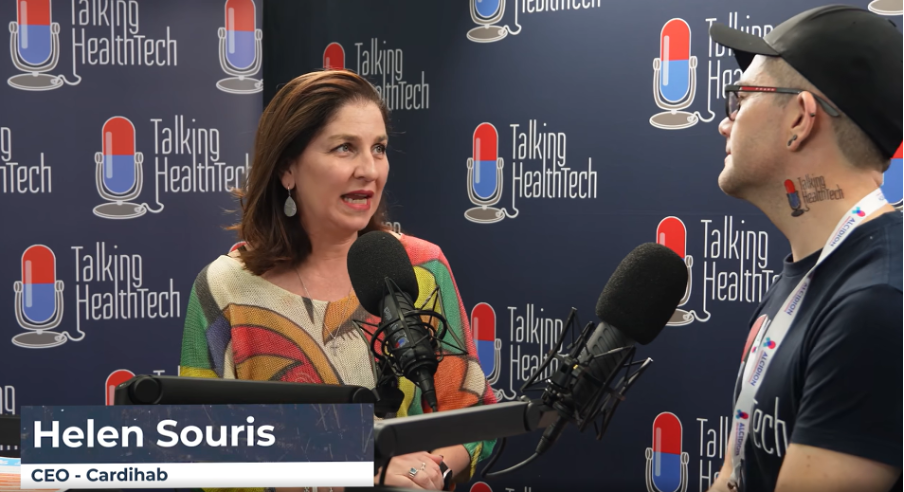Talking Healthtech Spotlight on Cardihab

Digitally Delivered, Clinically Backed: Cardihab's Game-Changing Path in Cardiac Rehab
Cardihab CEO Helen Souris recently spoke with Peter Birch from Talking Healthtech to discuss the challenges to access for cardiac rehabilitation and a new publication on Cardihab’s digital cardiac rehabilitation solution through Medibank’s Heart Health at Home program pilot.
In this session, Helen commented on the persistent issues regarding access to timely, effective cardiac rehabilitation, and an issue that remains one of the most overlooked gaps in patient care. Despite its life-saving potential, 80–90% of people never complete rehab following a heart event or surgery. Cardihab’s ambition is to change that and is proudly Australia’s only TGA-registered digital therapeutic specifically designed for cardiac rehabilitation.
Cardihab’s model enables patients to access supervised rehab anytime, anywhere—guided by qualified clinicians who know exactly how to support recovery.
What’s New: Insurer Uptake and Fresh Evidence
It’s been a landmark few months. More private health insurers—including St Lukes and GMHBA have joined Medibank, Bupa, NIB, Queensland Country Care in offering Cardihab’s cardiac rehabilitation solution to eligible members. That means broader access for patients and better outcomes for participants across Australia.
The highlight for 2025? The results of Medibank’s pilot—independently evaluated by the Baker Institute—were recently published in the European Society of Cardiology’s Digital Health Journal1. This publication shares compelling data from Medibank’s pilot, which compared Cardihab users to those receiving conventional rehab—or no rehab at all. The findings are powerful:
| Outcome | Cardihab vs. Usual Care |
|---|---|
| Hospital Bed Day Reduction | 71% |
| Completion Rate | 91% |
| Long-Term Risk Reduction (12 mo.) | Sustained impact |
| Clinical Outcomes | Equivalent to face-to-face care, but better reach, uptake, personalisation and completion |
Breaking Through Barriers
Traditional cardiac rehab requires multiple weekly hospital/clinic visits over several hours—challenging for anyone juggling life’s realities. Unsurprisingly, up to 60% drop out. Cardihab’s digital model flips that: with a 91% completion rate, we’re enabling patients to follow through, feel supported, and improve their outcomes. Cardiac rehab completion saves lives. It’s that simple.
Why It Matters
Cardihab provides a high-quality, evidence-based option for those who’d otherwise miss out – ie 80%2. Whether someone prefers in-person rehab or not, the reality is that people are not accessing cardiac rehabilitation. Cardihab can help ensure people are given a choice and that no one is left behind.
Call to Action
Our vision is clear: every eligible patient should have access to cardiac rehab that fits their lifestyle. Providers, insurers, clinicians—join us by referring patients, champion virtual rehab, and be part of a system that changes lives while transforming models of care. Become an active participant in the transformation journey in any way that you can.
The data’s in. The impact is real. Join us.
Watch the clip here: DHF25 - Helen Souris - CEO, Cardihab
References:
2. Beleigoli, A., et al. (2024). Clinical effectiveness and utilisation of cardiac rehabilitation after hospital discharge: Data linkage analysis of 84,064 eligible discharged patients (2016–2021). Heart, Lung and Circulation, 33(7), 1036–1045. https://doi.org/10.1016/j.hlc.2024.01.018